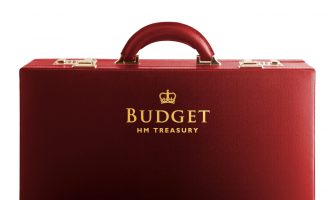“Cash is King.” As a business owner, I am sure you have heard this phrase more times than you care to remember, but do you actually know why? Emma Clifton, Business Advisory Partner explores further in her latest update.
I have come across a number of people over the years that run their businesses based on the cash that they have in the bank. Whilst this is not necessarily a bad thing (“if you don’t have the money, you can’t have it” – something I should stick to personally!) it is not the only factor to consider and can lead to some difficult conversations.
When talking to these businesses and sending them their accounts and tax returns, I am challenged on the accuracy of the numbers. “The numbers can’t be right; I can’t have made that much profit and have that much tax to pay as I don’t have the cash in the bank.”
It is important to understand the synergies between cash and profit, but also the differences.
If you are raising sales invoices in a timely manner and being paid quickly by your customers, you will see synergies between your cash in the bank and profits. The same applies to your purchase invoices and paying suppliers. If you are a lowly-geared company (i.e., you have little debt / financing) you will also see a correlation between the two.
However, if you are not on top of your credit control and your debtor days are high, you may well recognise the sale in one period but not have the benefit of the cash in the bank until a later period.
If you are a highly geared business with large or multiple financing arrangements, the monthly repayments will reduce the money in the bank account but will not be replicated in the profits.
I encourage you to ask yourself – What drives the cash in your business? It is only when you understand this can you identify the pinch points and the opportunities.
Ultimately, the cash coming into the business will enable you to pay your bills, pay your employees and keep the taxman off your back. A quiet life – doesn’t that sound idyllic? But in order to achieve this, forecasting is key.
An effective cash flow forecast enables a business to foresee the cash balances needed to cover the future liabilities arising and when this could be problematic. By identifying the pinch points early, it gives you more options to solve these and be proactive rather than reactive. It ensures that the business has enough funds to pay suppliers (avoiding supply delays) and, perhaps more importantly, to pay employees without whom you would not be able to operate. We are all feeling the pressures of the recruitment market, no matter what industry you are in and what location trade from, so it is more important than ever to keep your workforce happy and motivated.
As mentioned above, the credit terms you have arranged and agreed with your customers can play a huge part in your cash flow position. Business owners have many hats they have to wear, and I suspect that credit control is the one that is hiding right at the back of the cupboard and only comes out on special occasions! However, preparing a cash flow forecast can really help to identify those problem-customers that push their credit terms to the limit, or outright ignore them. This enables the finance team to concentrate their efforts and by improving the debtor days by a week or two can really be the difference between paying a bill or not.
It is not uncommon for stakeholders to also show an interest in cash flow forecasting, especially when it comes to finance renewals or new agreements. In a post-covid world, financial institutions are requesting more information to ensure the viability and affordability of new arrangements.
Effective management of your company’s cash flow is a critical part of running your business and in the current climate of uncertainty, new governments, interest rates, it is more important than ever.
But remember, an effective cash flow forecast can also be used for strategic planning not just working capital requirements. It’s not just the pinch points that we are looking out for, it’s the investment and growth opportunities as well. This could be anything from purchasing new plant to replacing old vehicles and employing additional members of staff.
The key to successful forecasting is to keep tracking and updating this on a daily, weekly or monthly basis to keep this as current as possible. Comparing the actual results to the forecasted position can be powerful in understanding what drives your business and identify objectives to improve, build and grow.
If you would like any advice on cash flow forecasting or assistance with putting this together, please reach out to Emma, by calling 0330 058 6559 or emailing hello@scruttonbland.co.uk







